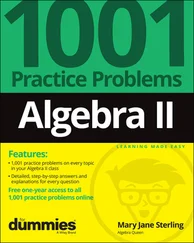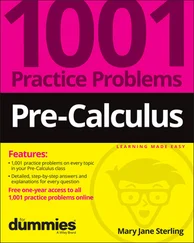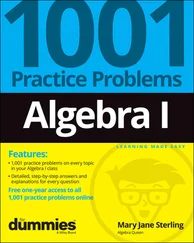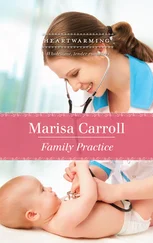Person has poor resiliency skills with a significant degree of psychological adjustment in dealing with critical life events and major life stressors (e.g., job loss, the death of a family member, divorce, personal illness, injury, disease, disability). Person avoids taking therapeutic responsibility for any mental health symptoms and conditions. Person struggles significantly with positive optimism and balancing mood, emotion, affect, and rational thinking. Person cannot handle daily life stressors with the degree of coping and resiliency skills such as seen in Level 2 individuals. Person does not transition well through the phases of a pandemic disaster. They have considerable difficulties cultivating any meaning, personal growth, or hardiness, and self-care is significantly deficient.
Person does not have a well-balanced life but maintains a poor routine of virus-related hygiene habits. Person has little if any awareness of respect for self and others concerning social distancing, stay-at-home orders, and other good virus hygiene. Person does not engage in regular exercise or recreational activities. Nutritional intake is poor because of financial inability and lack of knowledge in purchasing healthy food items. Person demonstrates unhealthy patterns of sleep and rest, has poor virus-related hygiene, and exhibits a poor ability to maintain overall daily functioning. They are not perceived by themselves and others to be focused, motivated, or goal oriented. They are observed by others not taking personal responsibility for living in positive optimism and struggle significantly more than Level 2 individuals. Person demonstrates poor interpersonal communication skills and cannot sustain communication at adequate levels. Relationships are poor and often strained because of interpersonal communication skills. Person is not viewed by others as action oriented or a contributor. They have a narrowly defined environment in which they can maintain a balance of medical, physical, mental, and behavioral health and would be considered poor in this area.
Person struggles considerably in a wide range of life areas, such as academics, job, career, and economic stability. Person exhibits poor social and familial connections. Person has poor ability for self-motivation and does not engage in organized activities such as social clubs, organizations, religious/spiritual life, or recreational activities. Person struggles considerably to maintain food, shelter, and clothing. This may be because of issues of systemic racism, low education, poor job skills, or lack of ability to transfer skills to more highly skilled and better paying occupations. It may also be because of medical, physical, and/ or psychiatric disability; poor access to quality health care; inadequate or no transportation; or other sociocultural issues that hinder their ability to achieve optimal resiliency. A balance of home, work, academics, and social life is nonexistent. Person exhibits poor adaptation and adjustment to a pandemic disaster because of significant struggles personally, medically, physically, psychologically, behaviorally, financially, and occupationally and significant struggles with independent living, environmental functioning, and/or the ability to sustain any level of daily functioning.
Person goes through periods of exacerbation and remission due to medical, physical, and mental health conditions. Person has a poor ability to maintain personal responsibility for their medical, physical, behavioral, mental, and psychosocial health. This may be because of health disparities; poor access to quality health care; or other socio-cultural factors that hinder their medical, physical, and mental health and overall wellness. They do not use support systems, resources, or technology to live life in optimal wellness. This is due in part to a lack of access to transportation, isolation in a rural geographic region, little or no health care benefits, and other issues related to health disparities.
The second model of the PRRC model assesses risk factors during a pandemic virus and is rated on the following Risk scale:
| Risk Scale |
| 5 = Extreme Risk |
| 4 = Severe Risk |
| 3 = Moderate Risk |
| 2 = Mild/Slight Risk |
| 1 = Low Risk |
At Level 5, the person has extremely poor mental, behavioral, and psychosocial health. The individual has no respect for the seriousness, lethality, and consequences of a pandemic virus. They are noncompliant with virus hygiene protocols such as wearing masks, washing hands, and keeping a safe social distance. They also do not endorse the use of vaccines. Individuals at Level 5 experience and exhibit extreme fear and anxiety in response to a pandemic disaster. However, this is directed solely toward their changing environment, which they do not understand, recognize, or feel they have control over because of a pandemic disaster. Individuals at Level 5 may or may not be triggered by specific events (e.g., media reporting of positive COVID-19 cases, COVID-related illnesses and deaths, school and workplace closures). This is because they have an extreme lack of awareness of a pandemic disaster and how it could potentially adversely impact their present life. Clinically significant psychological/emotional symptoms and conditions are in the extreme range, and the person has chronic and persistent traits that create regular and ongoing mental health crises in their life. The individual does not exhibit stress-hardy behaviors. The ability to bounce back from adversity is extremely poor because of inadequate coping and resiliency skills. Individuals at Level 5 do not endorse public health principles, practices, guidelines, or government mandates associated with a pandemic disaster. They view virus hygiene and adherence to public health guidelines as nonessential to the protection of themselves and others. Thus, persons at Level 5 take extreme virus hygiene risks in comparison to persons at Level 4. Individuals at Level 5 struggle enormously with balance, adaptation, and adjustment in relation to their changing pandemic environment. They typically do not have the capacity to respond to the grief, loss, and extraordinary stressful and/or traumatic events associated with a pandemic virus because they are too internally focused on their extremely unhealthy thoughts, feelings, and cognitions. Persons at Level 5 consistently struggle with balancing the reality of a pandemic disaster with other life responsibilities. They cannot move forward because of life circumstances related to their extreme medical, physical, and mental health conditions. Persons at Level 5 also have extreme academic, job, career, relational, financial, and other hardships that may be beyond their control. Their overall mental and physical well-being is extremely compromised by their inability to cope with adversity. Persons at Level 5 find very little meaning in their existence and find it difficult to gain relief during phases of a pandemic disaster. Some individuals at Level 5 exhibit suicidal ideation and have a history of suicide threats and failed attempts. Adjustment and adaptation to the overall effects of a pandemic virus are extremely poor because they do not recognize a path forward to achieve overall health and well-being. The mental, behavioral, psychosocial, and medical/physical health of the individual at Level 5 is demonstrated by the following.
Person is at extreme risk, with a poor degree of psychological adjustment in dealing with critical life events and major life stressors (e.g., job loss, the death of a family member, divorce, personal illness, injury, disease, disability). Person does not take therapeutic responsibility for any mental health symptoms and conditions. They demonstrate no positive optimism and have a poor balance of mood, emotion, affect, and rational thinking. Person generally cannot handle daily life stressors with any degree of coping or resiliency. Person transitions extremely poorly through the phases of pandemic disaster and has no ability to cultivate new meaning, personal growth, hardiness, or self-care.
Читать дальше












